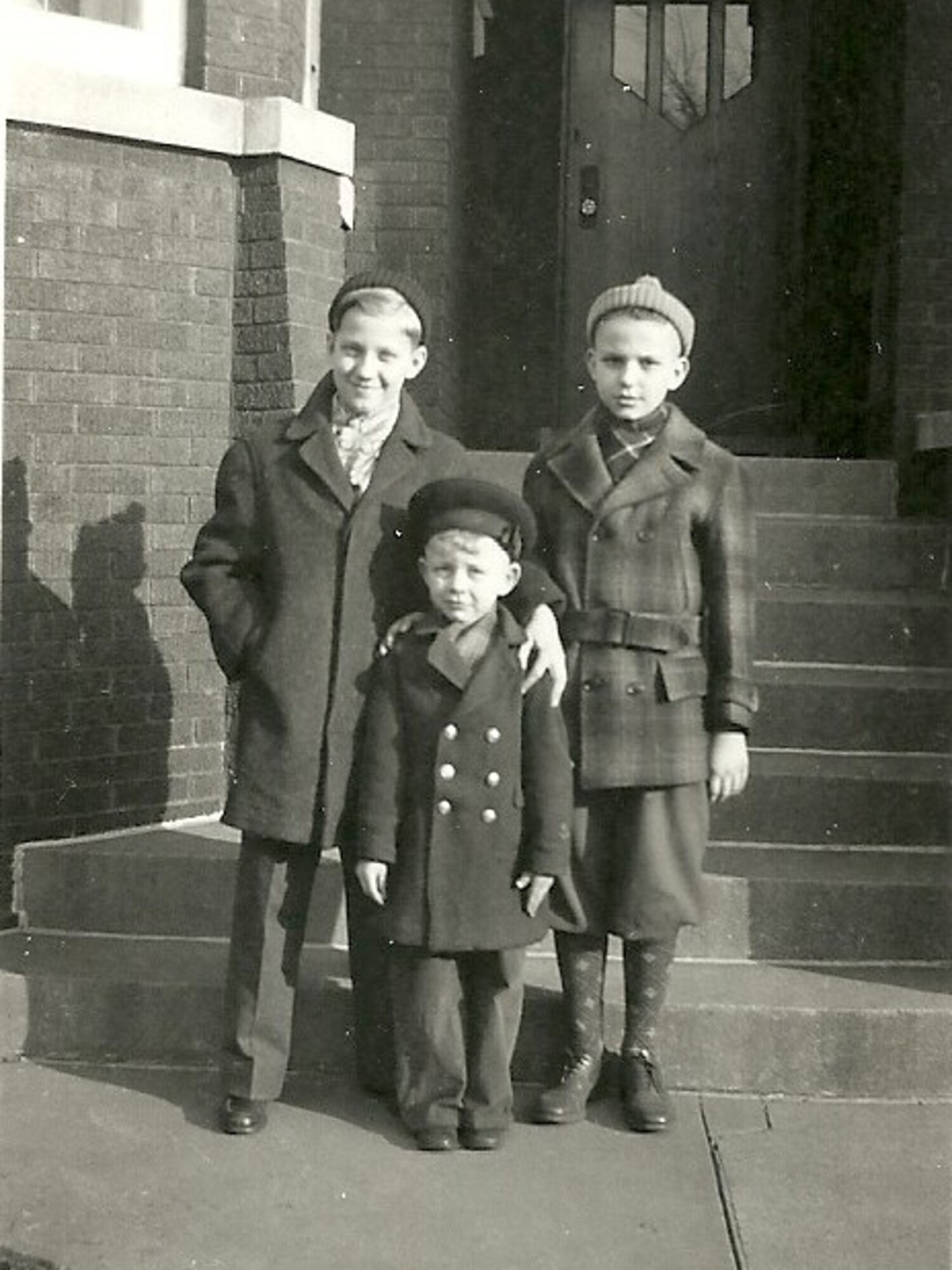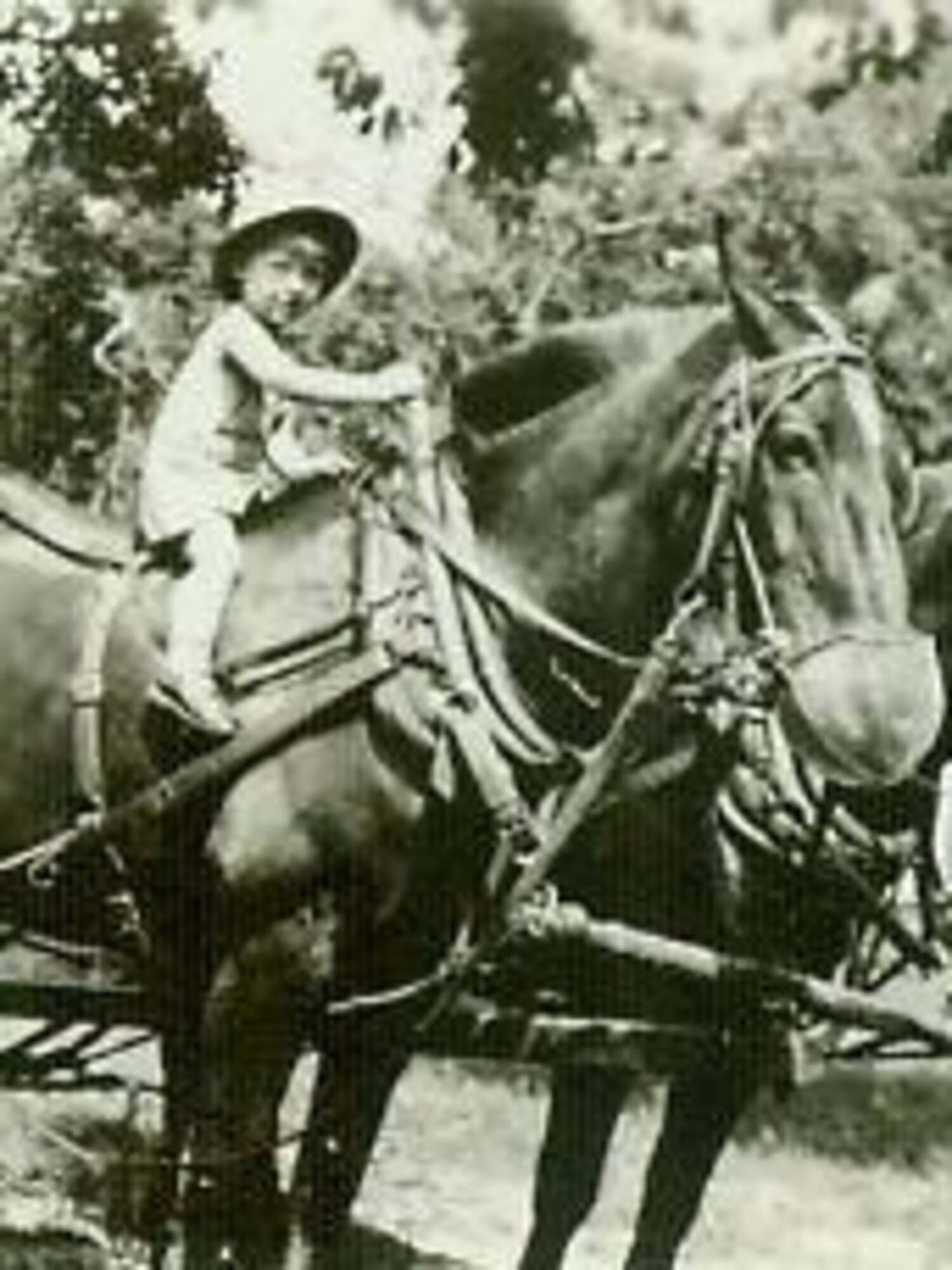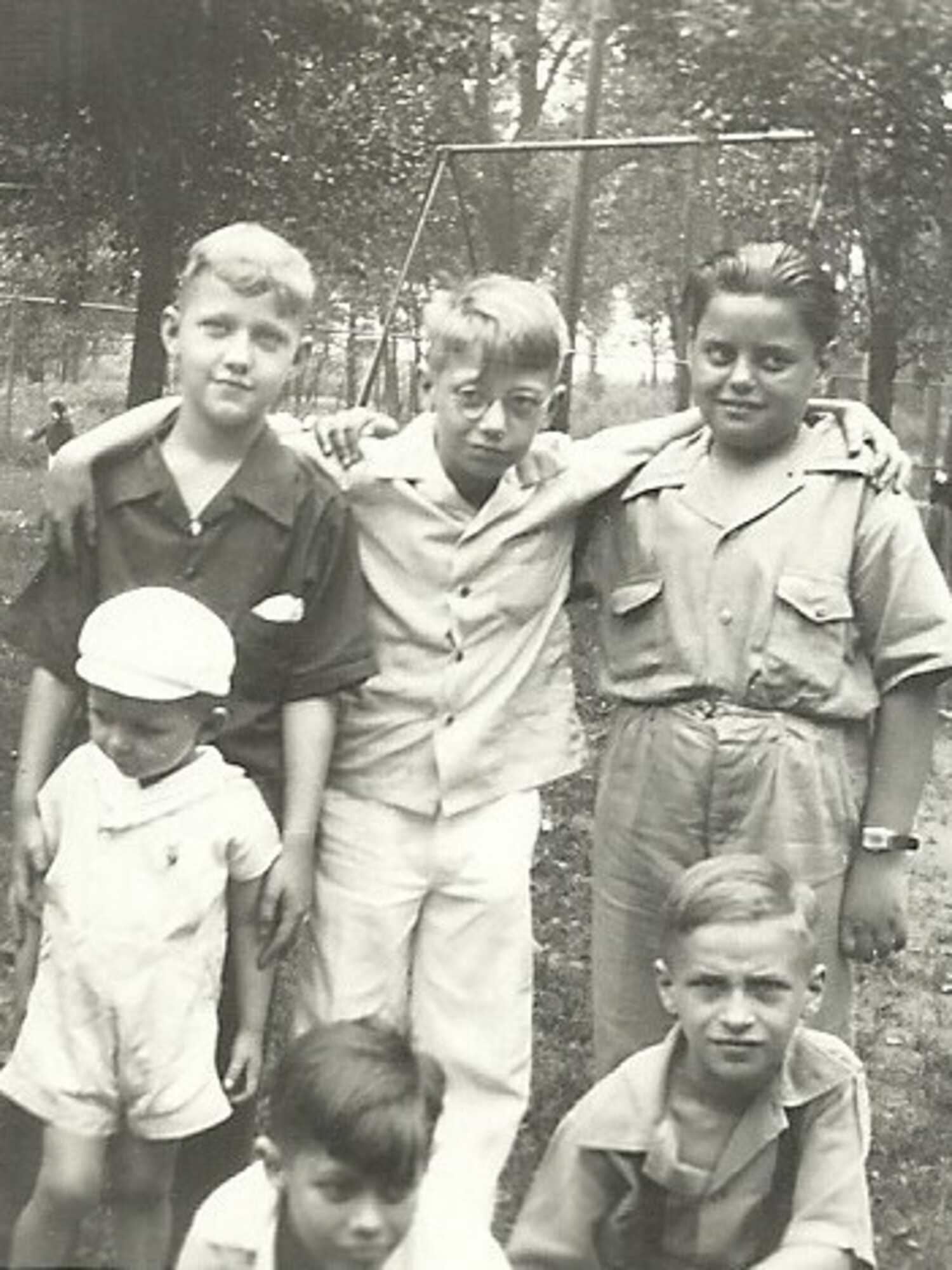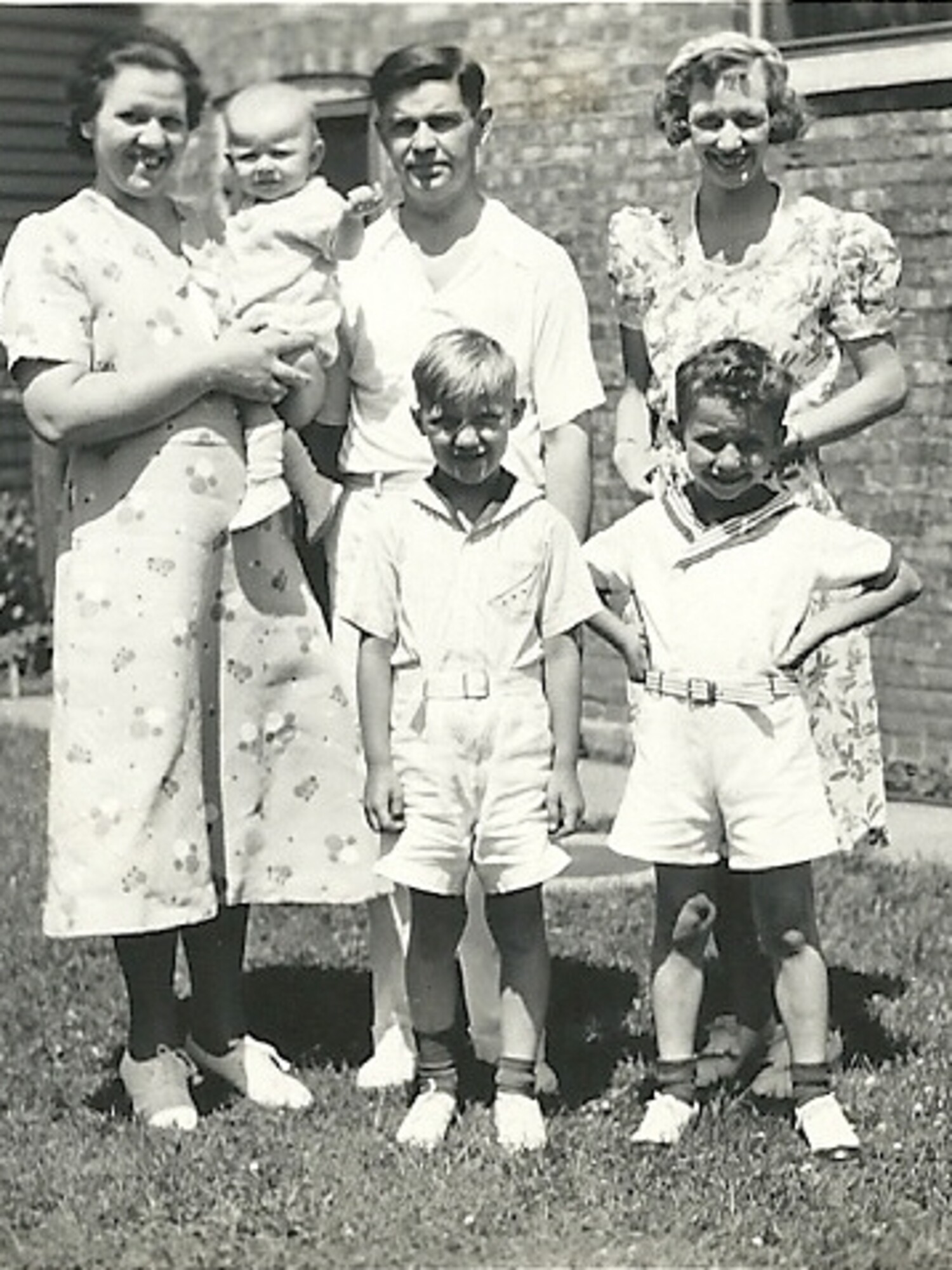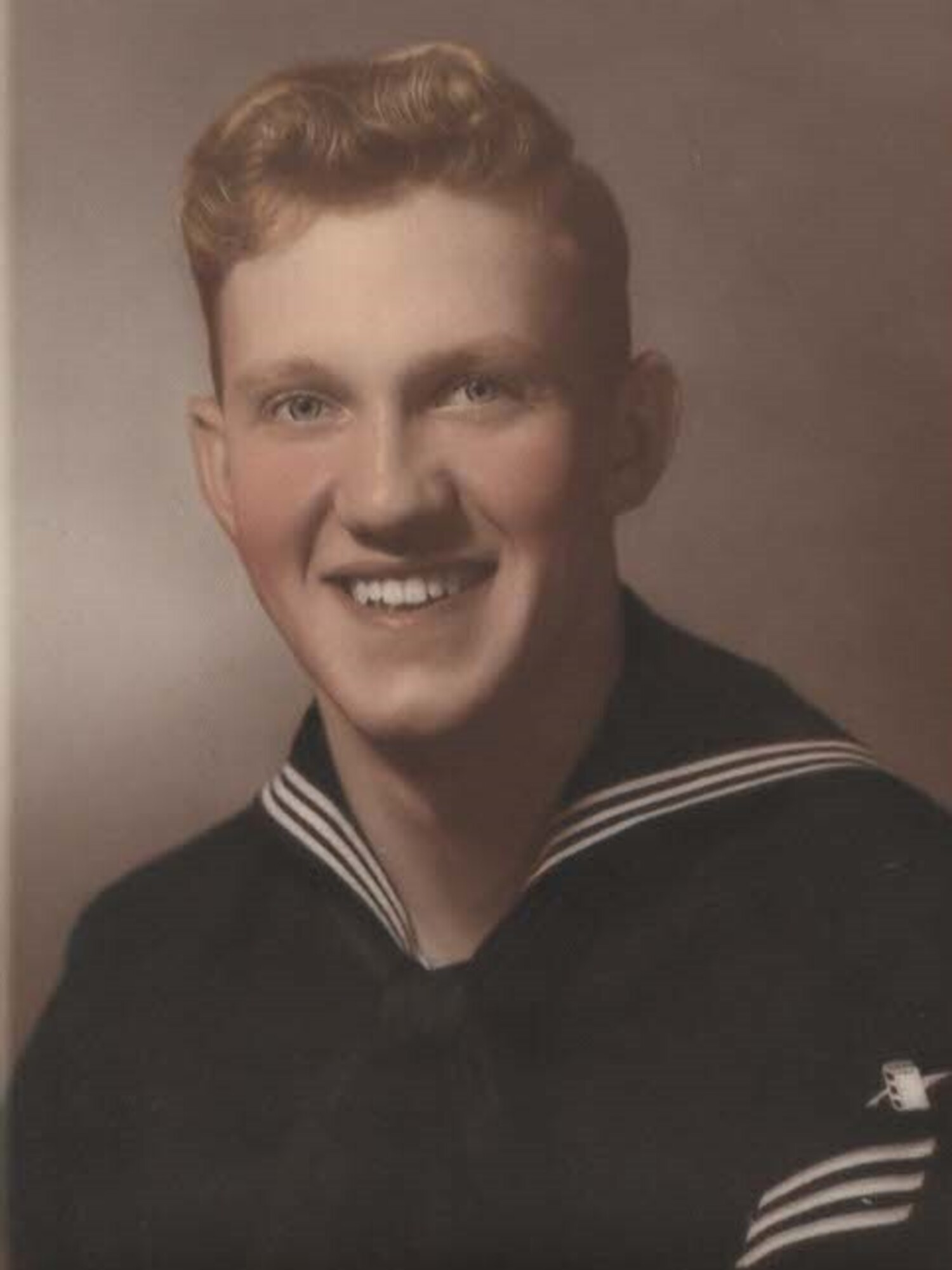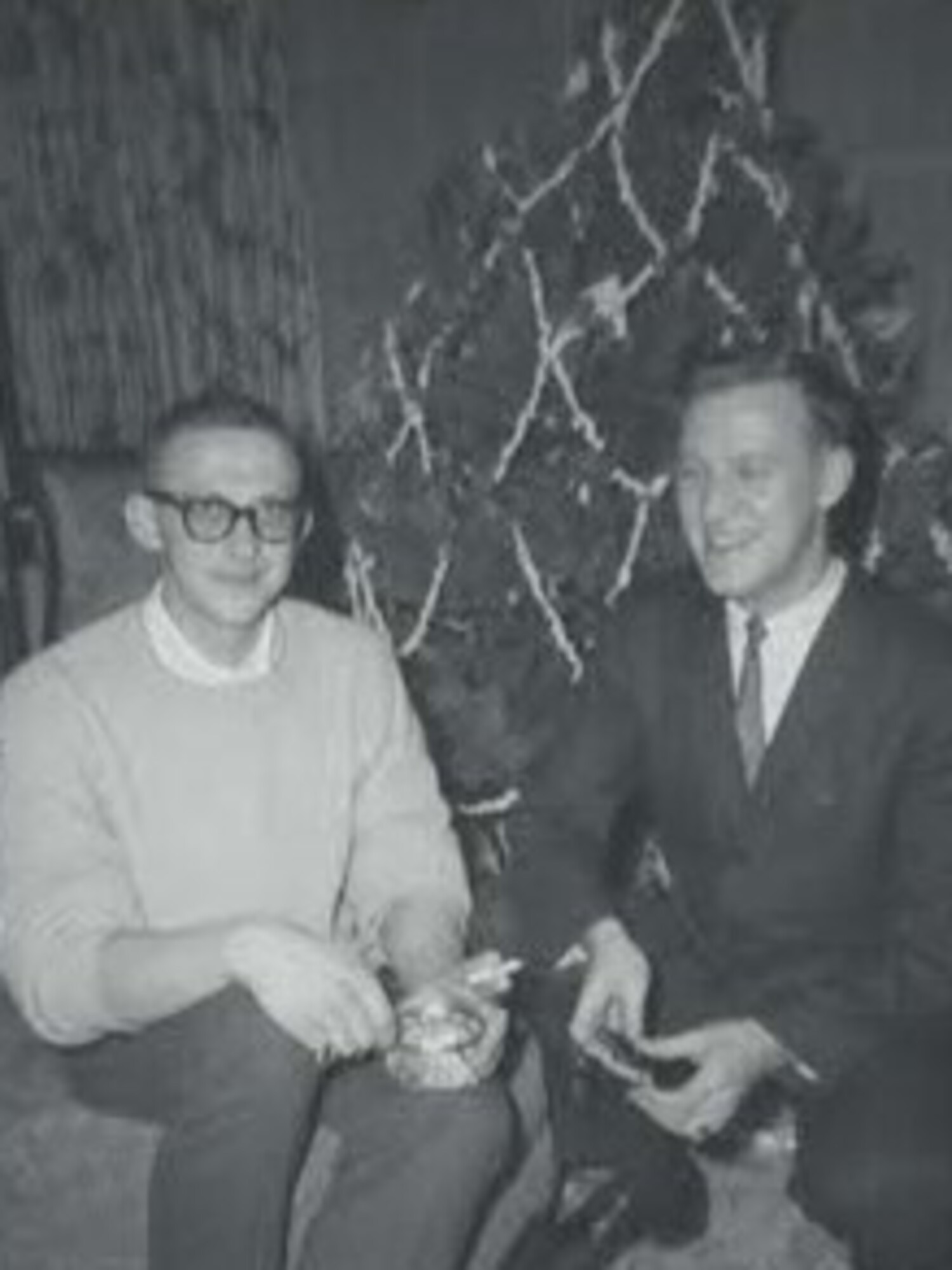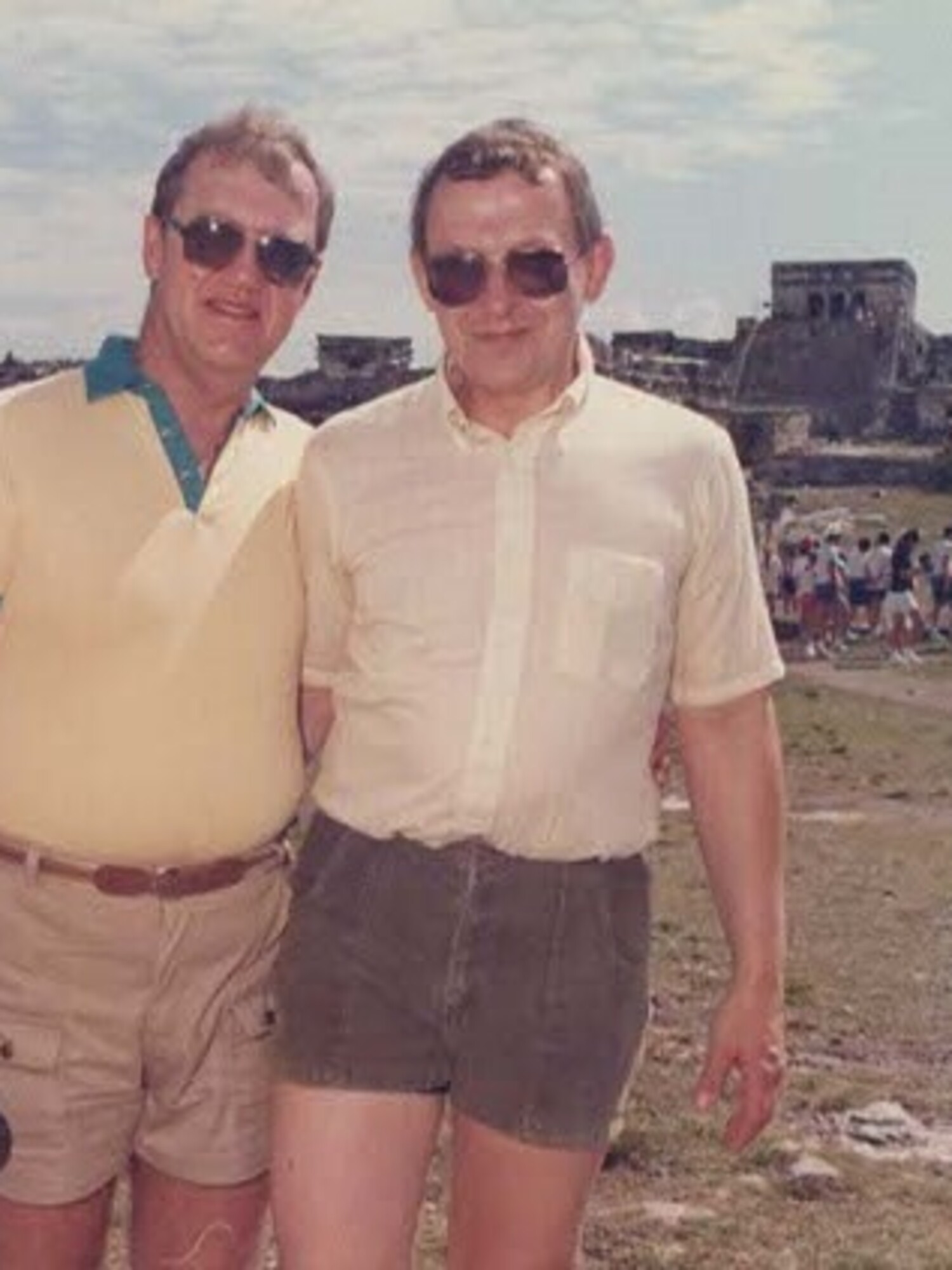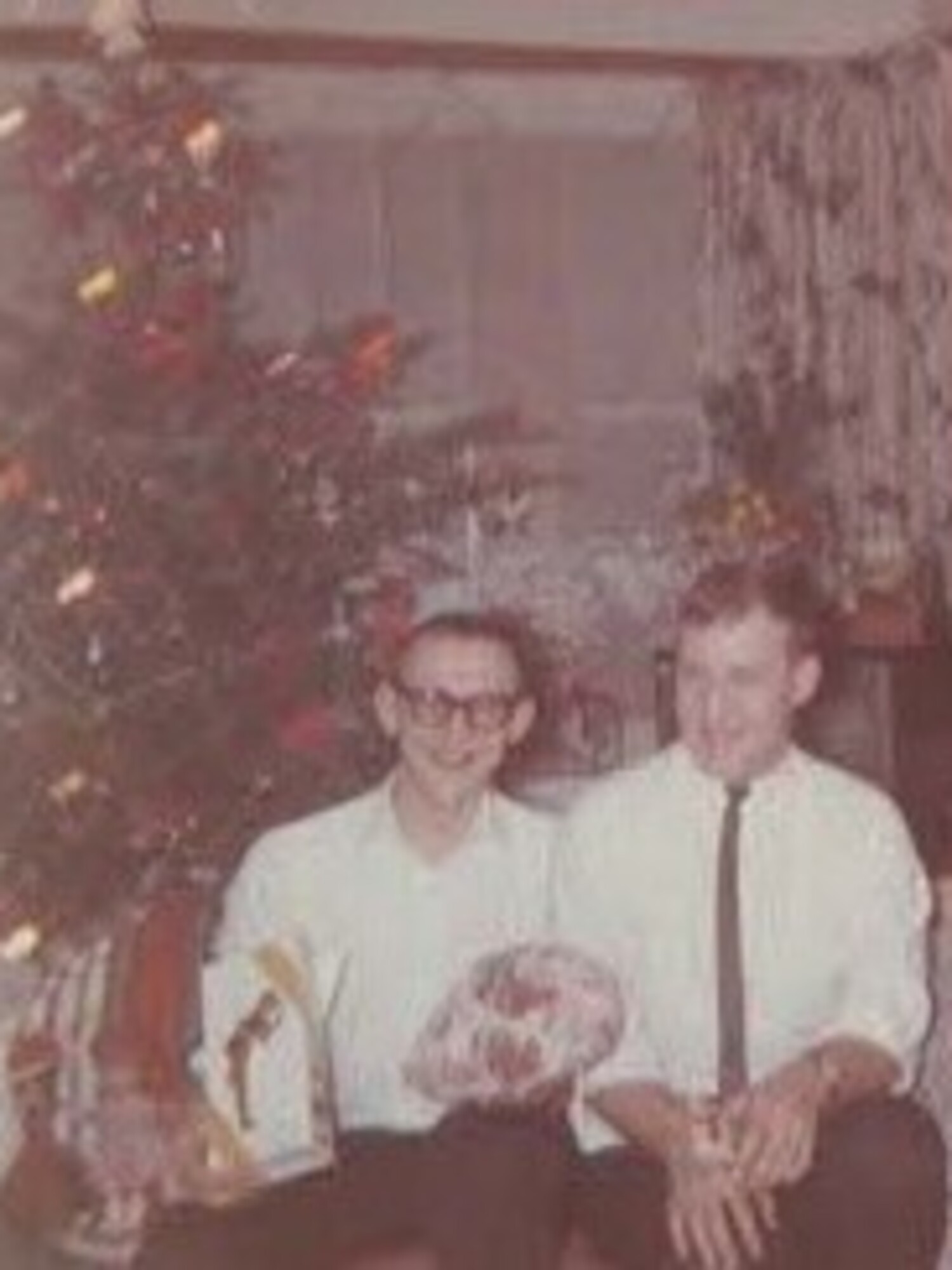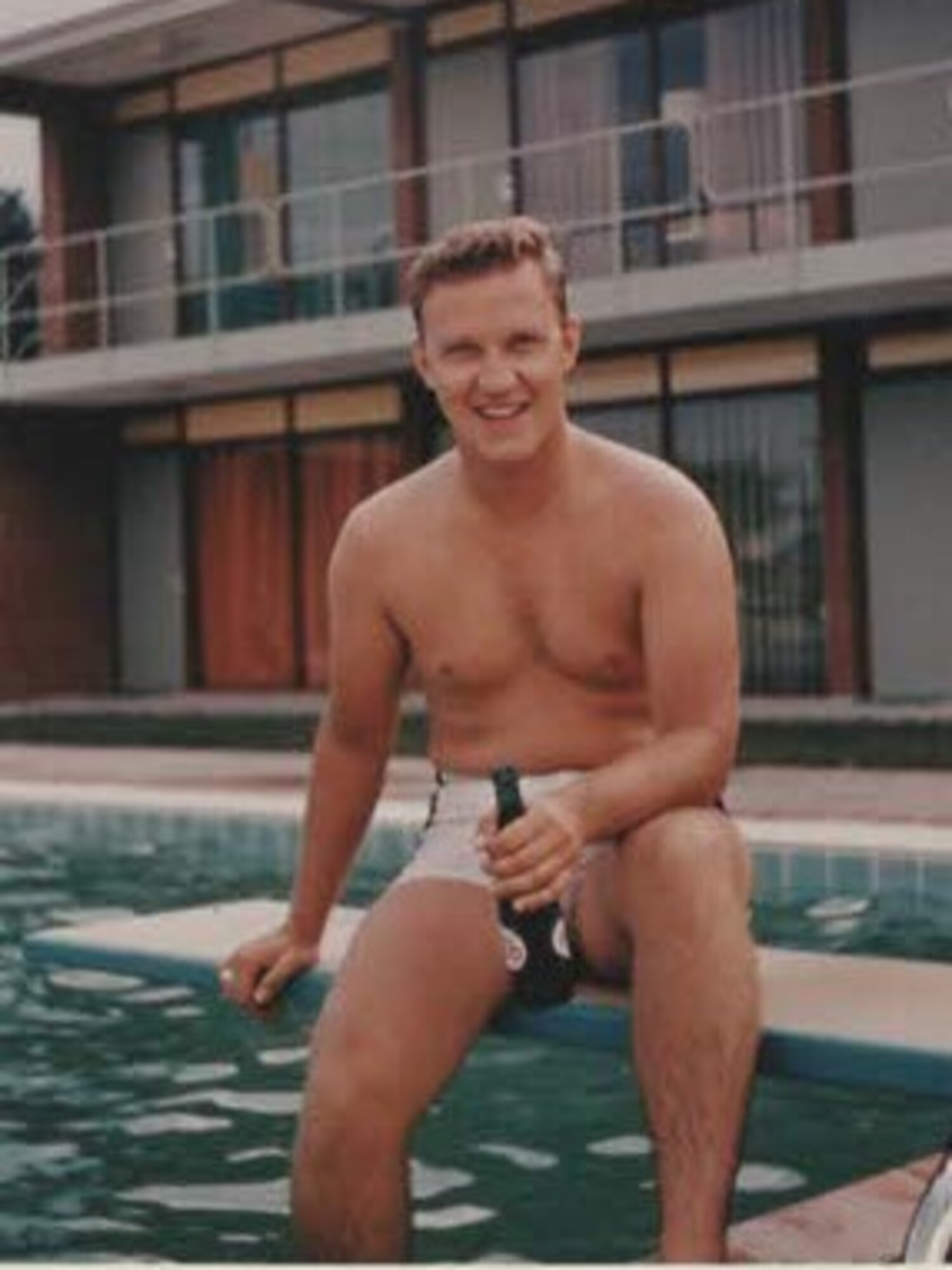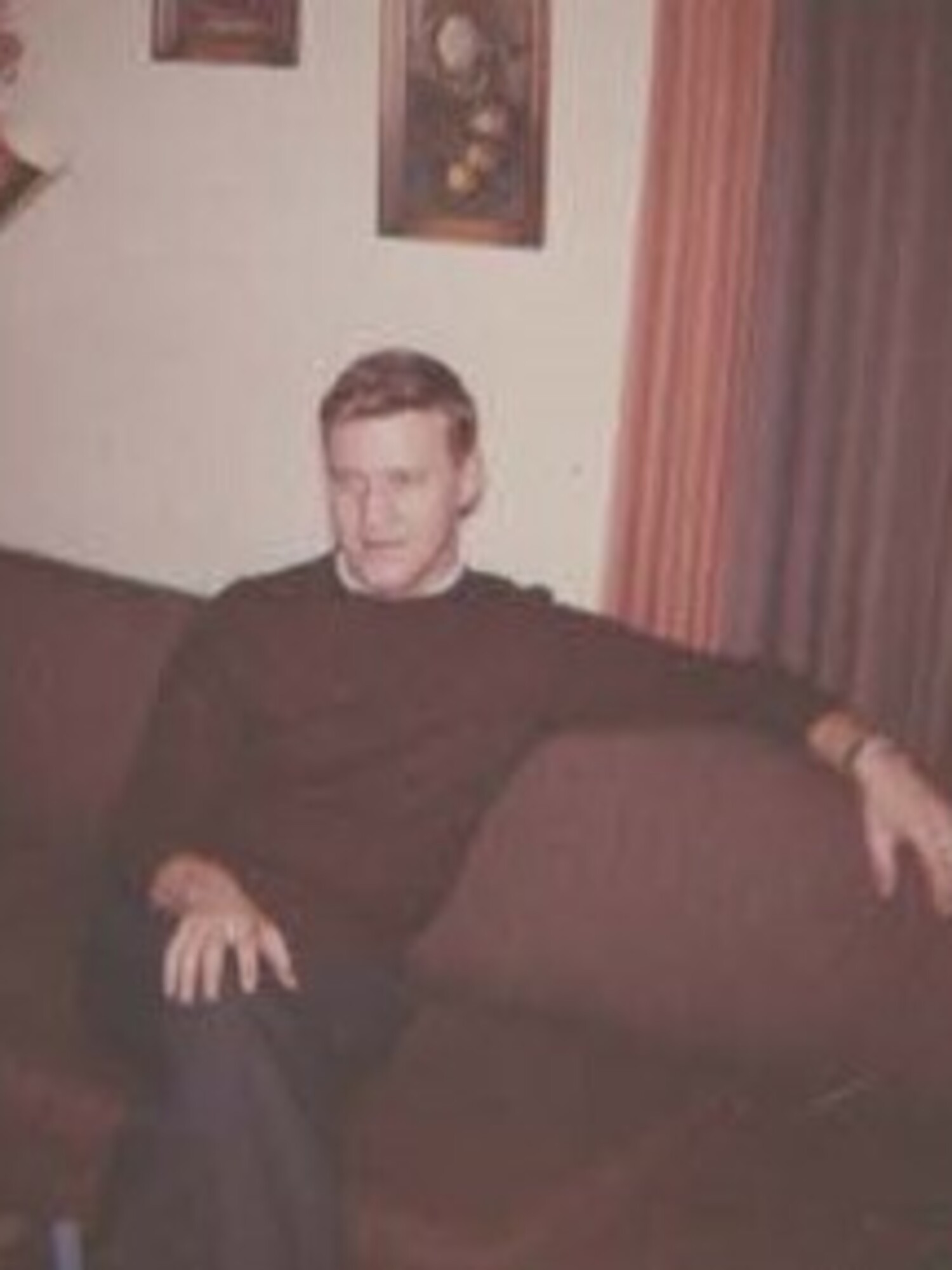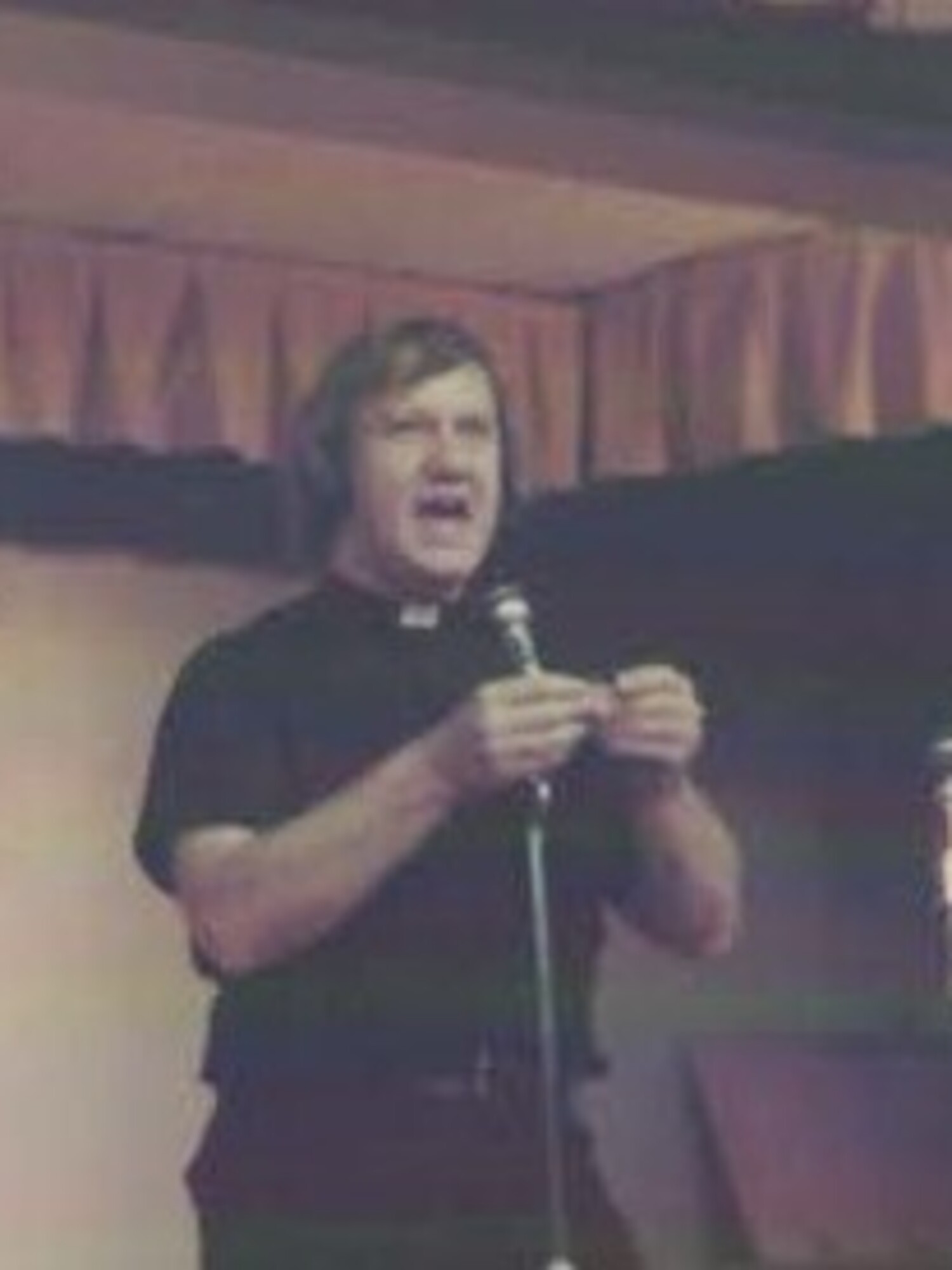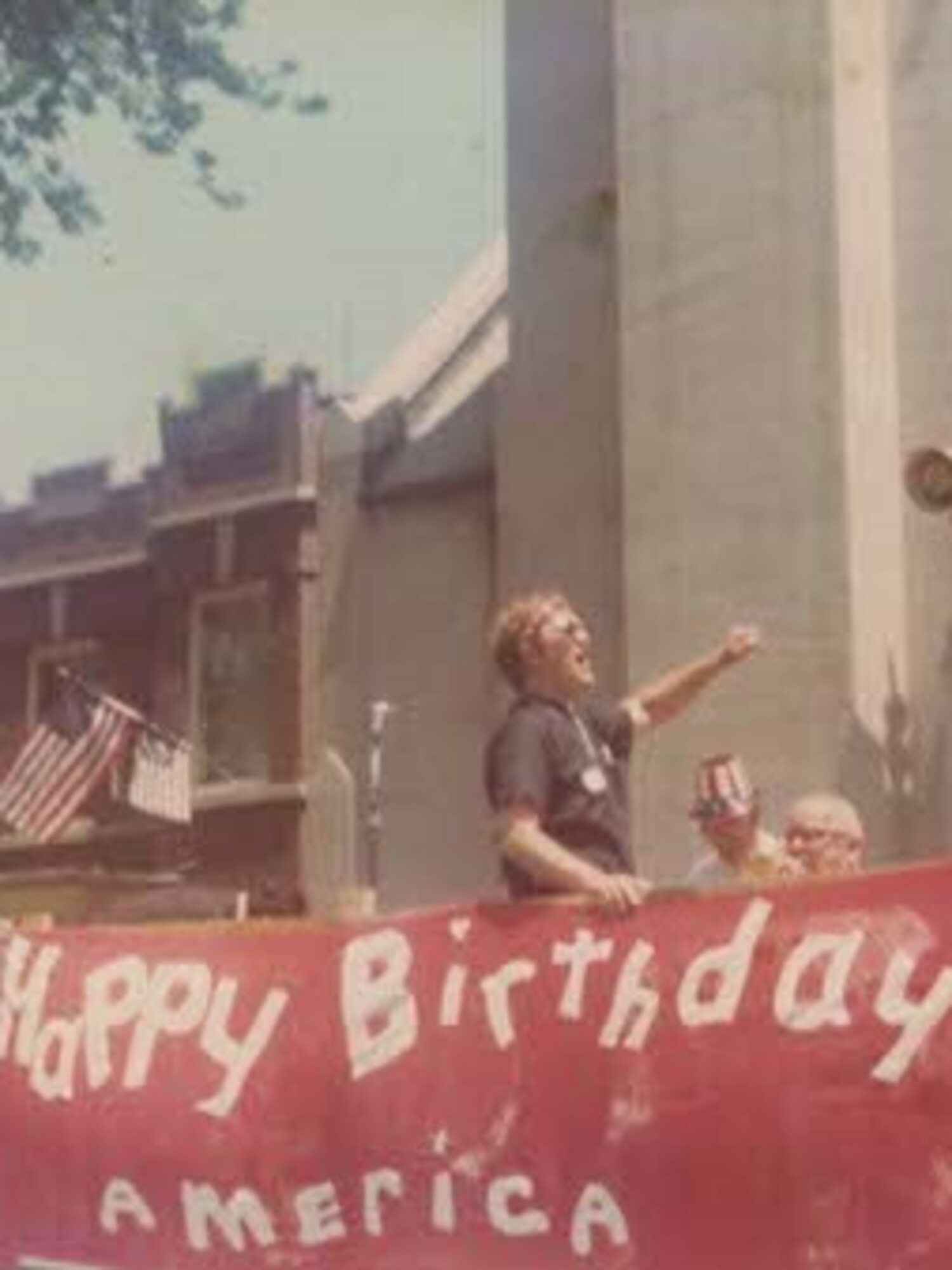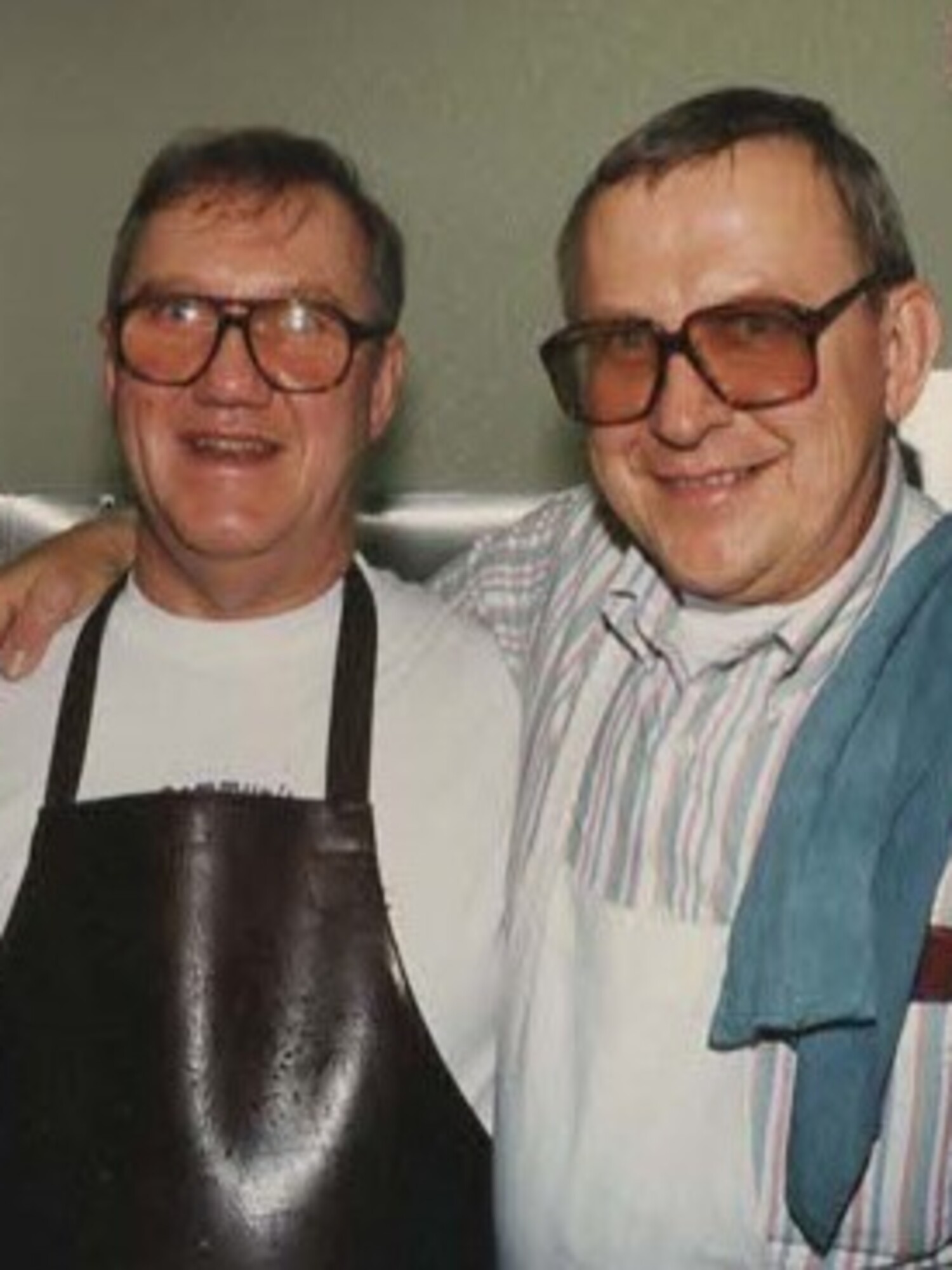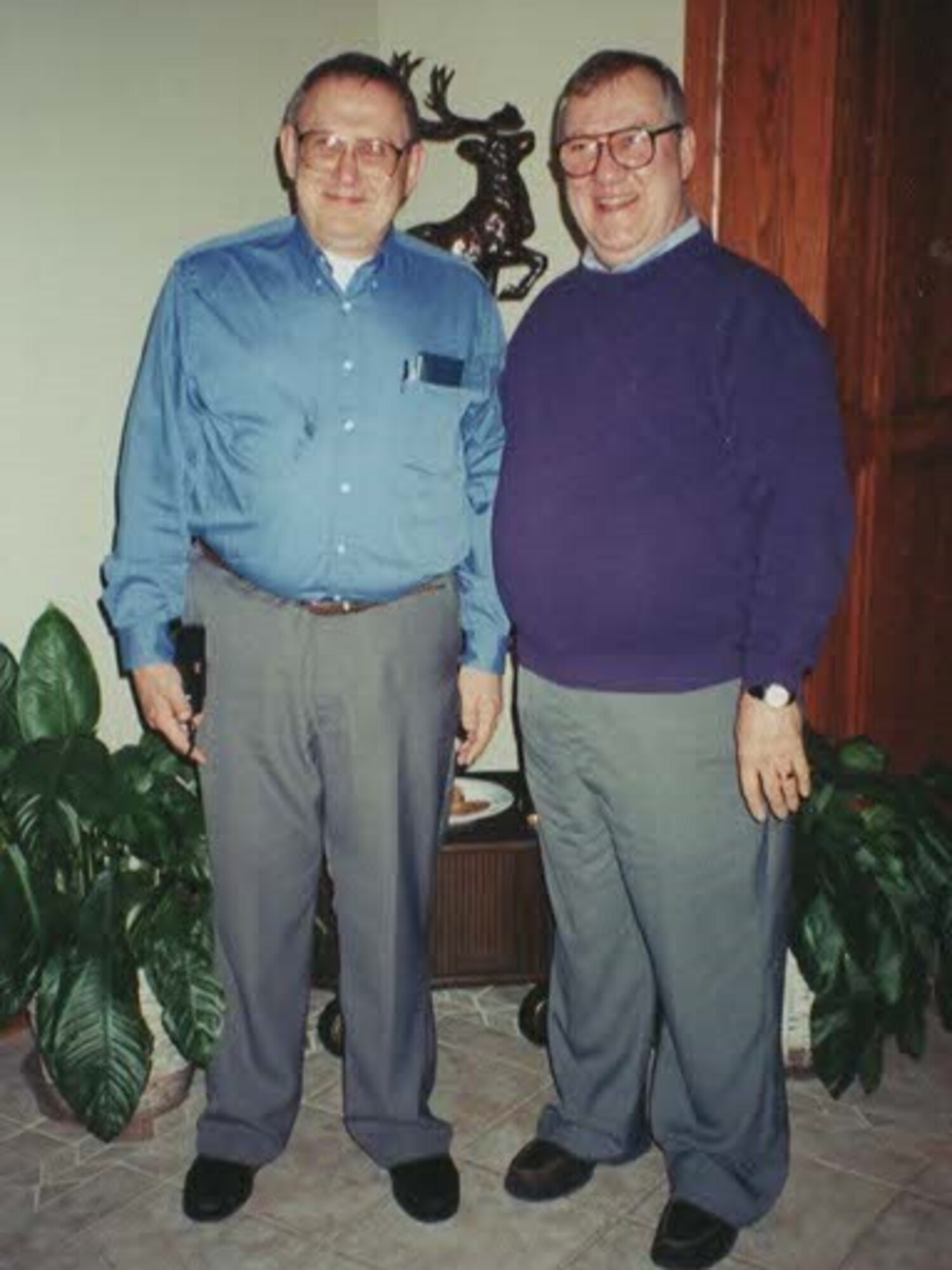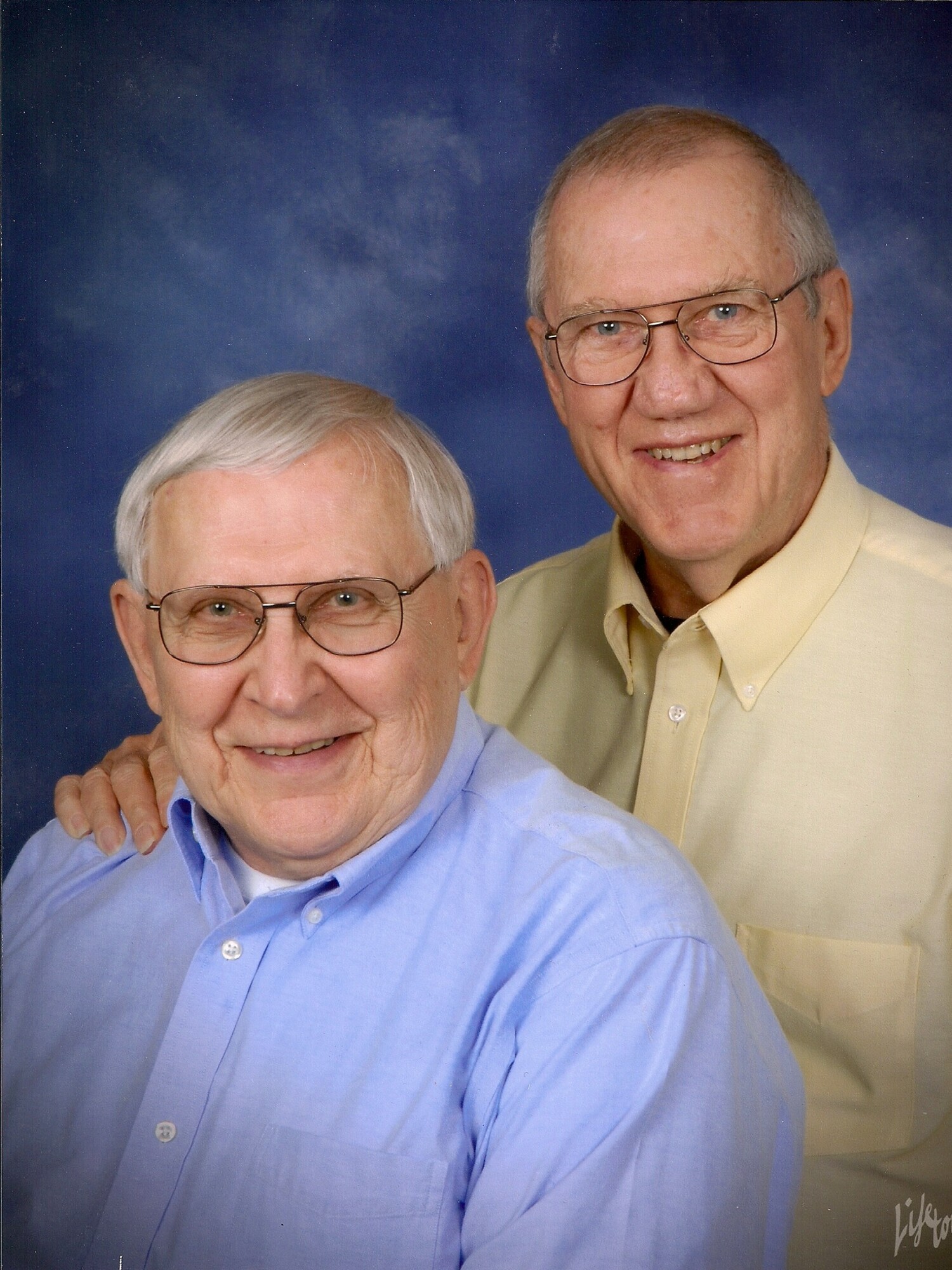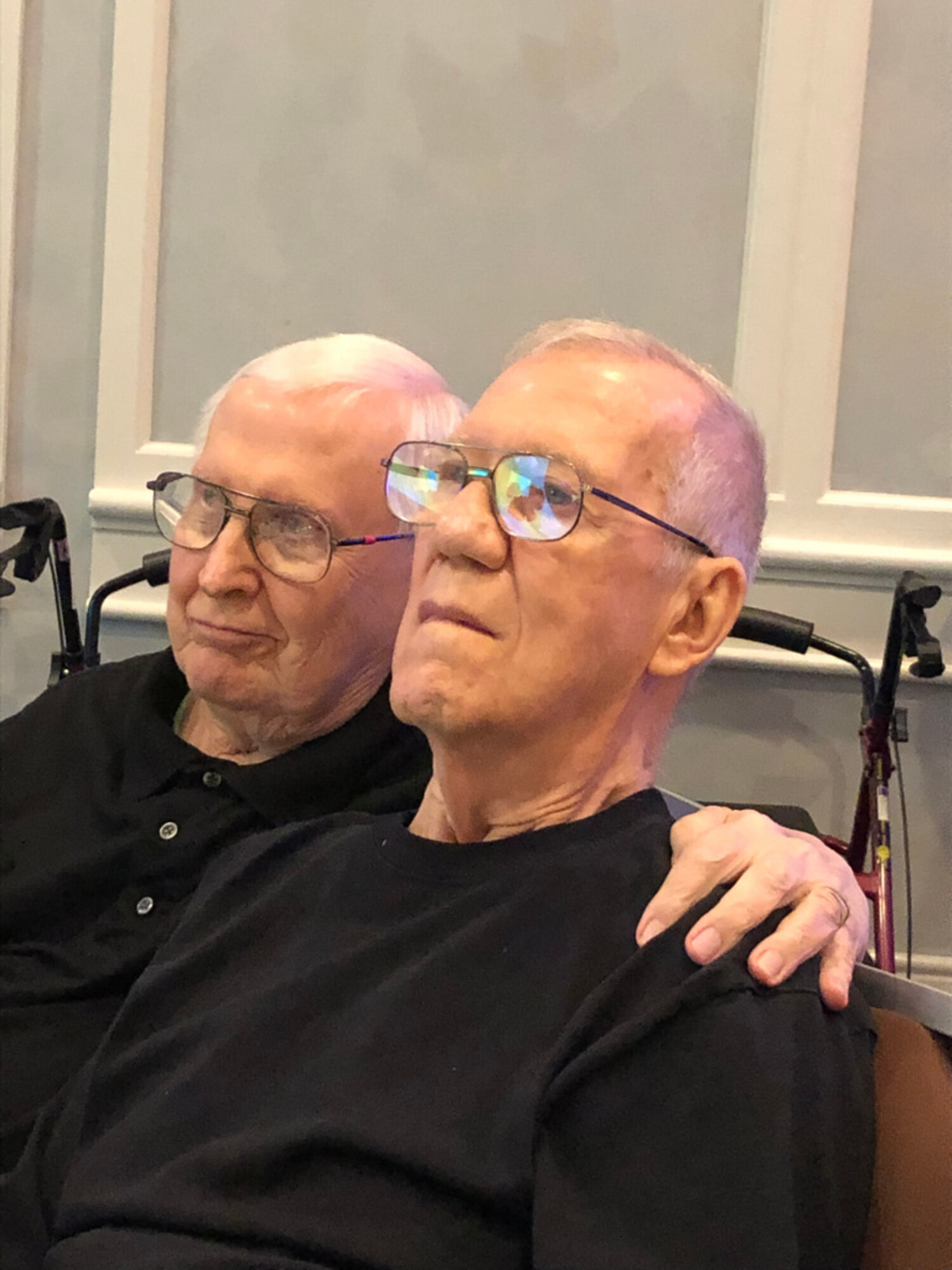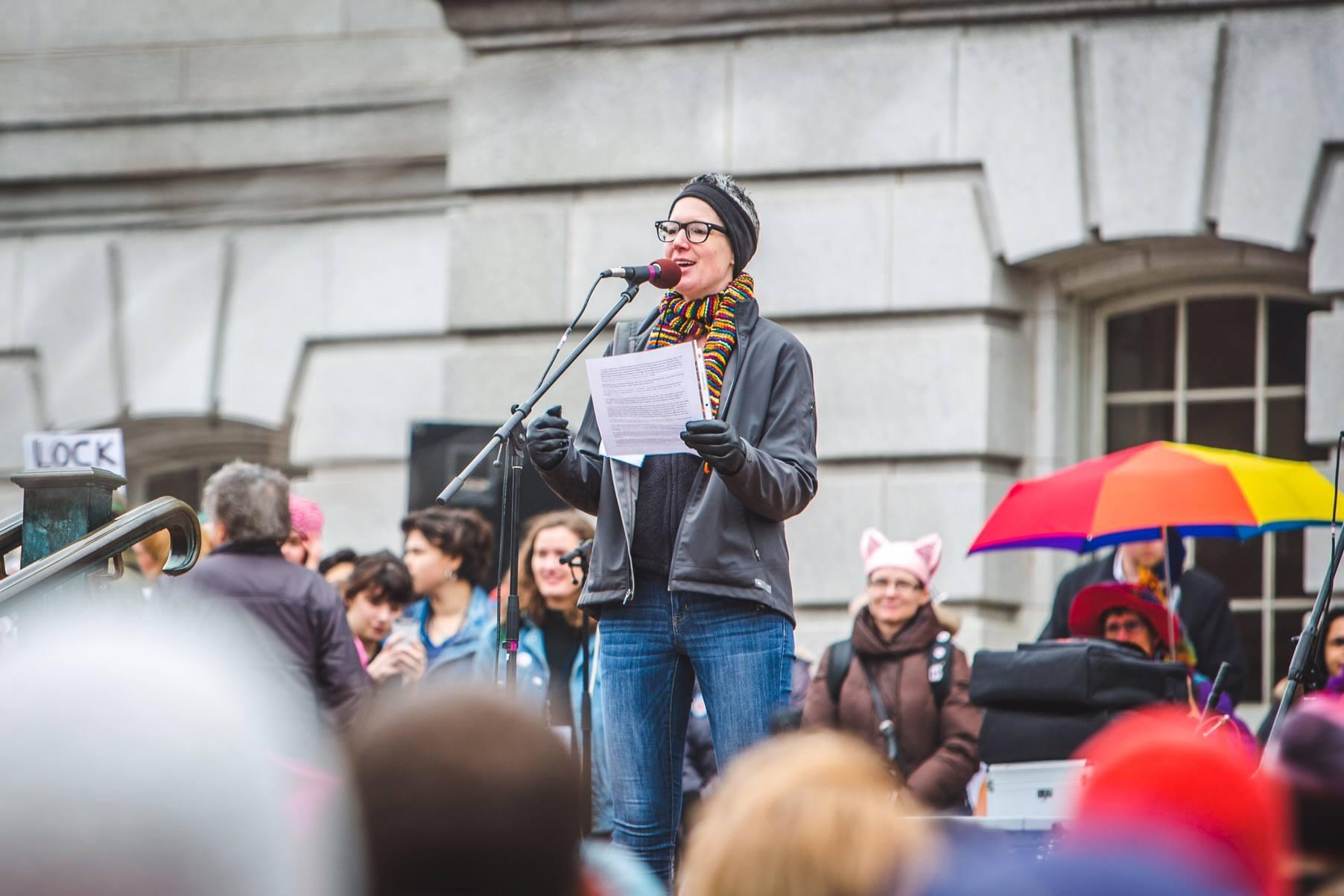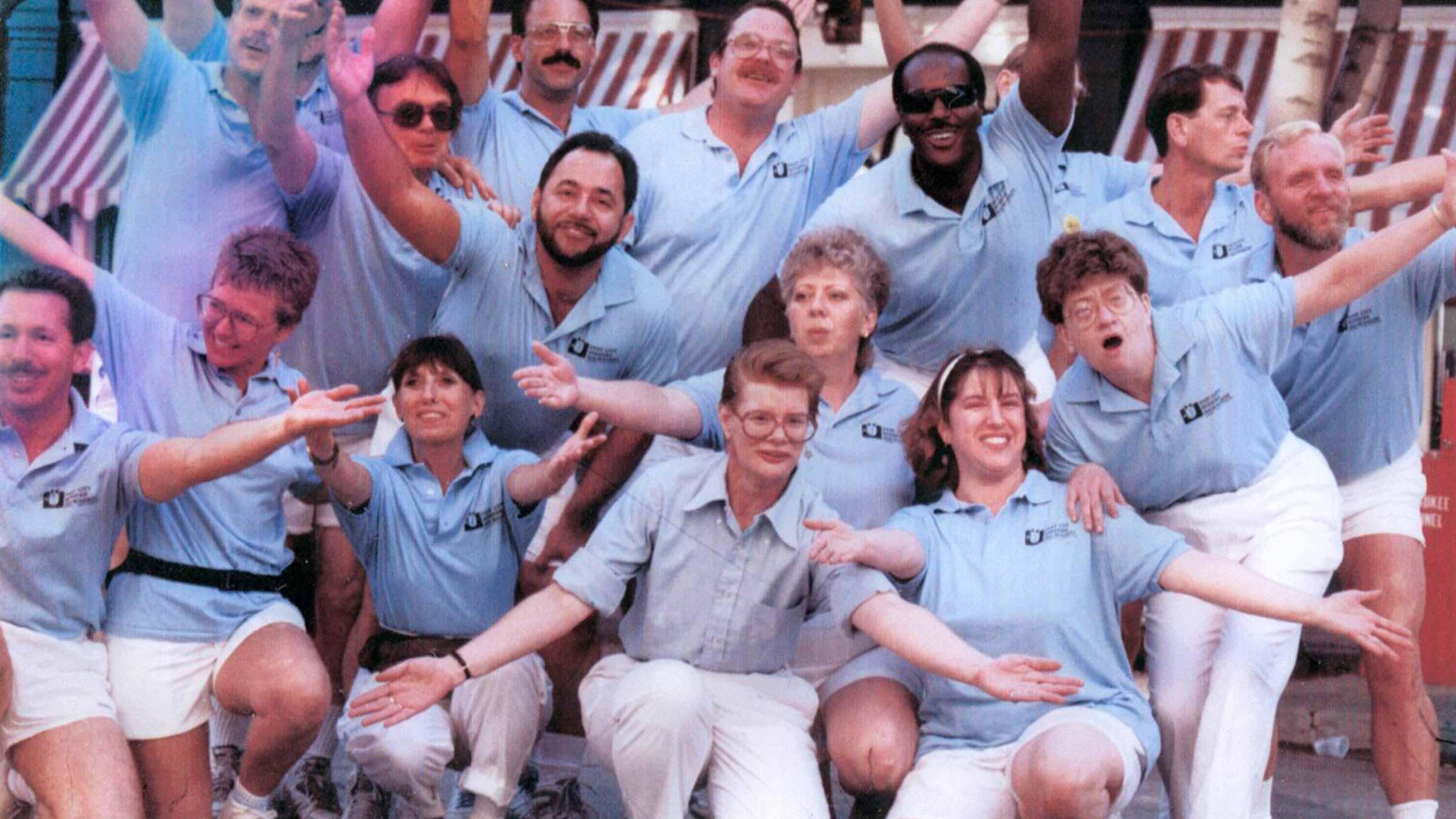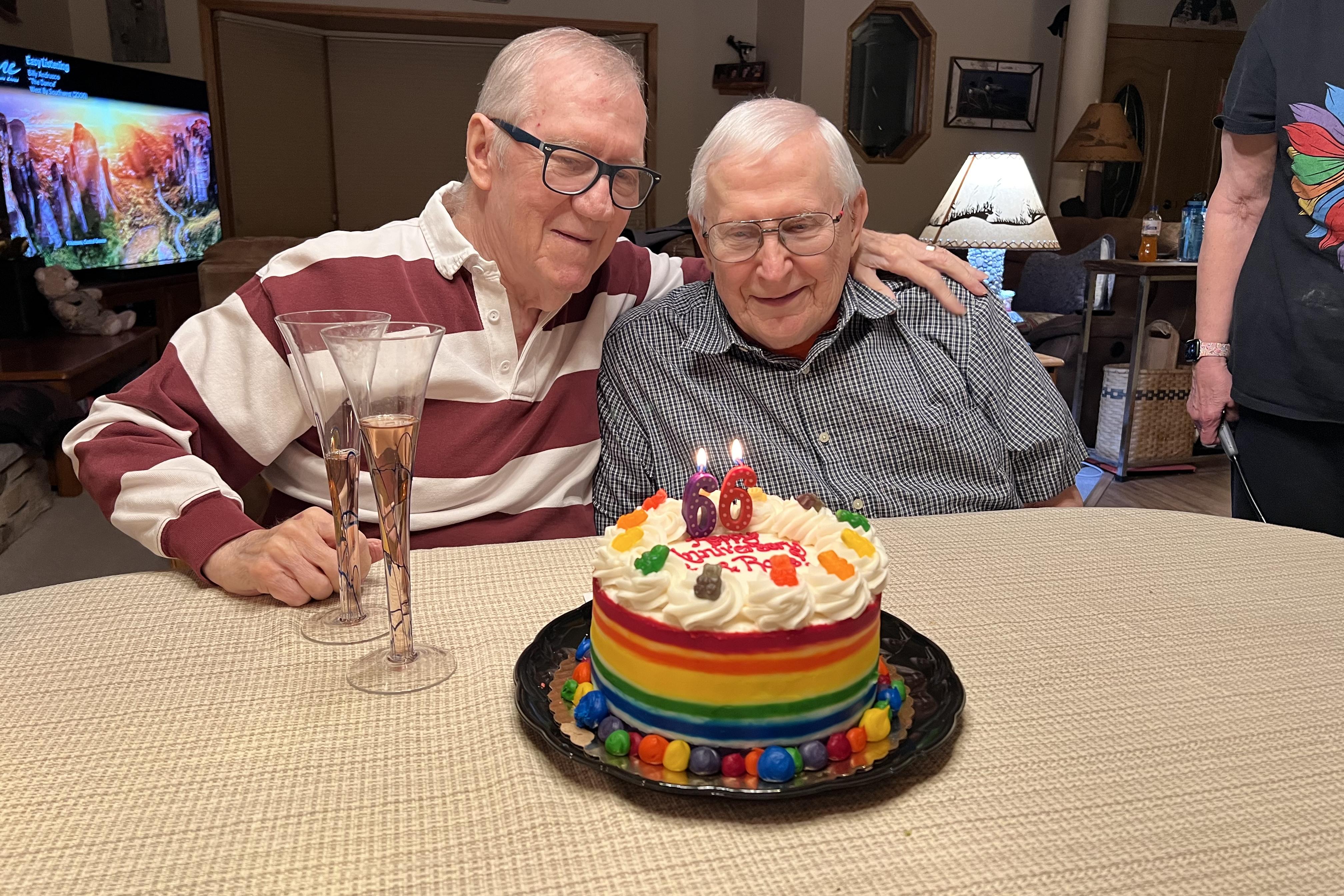
Erv Uecker & Ross Walker: love is the message

"Don't sugarcoat anything, anywhere, anytime, for anyone."
Erv and Ross met in Chicago in 1957. Over the years, they were known as “ErvAndRoss,” although they had very distinct and separate identities, personalities, careers, and passions.
The couple would have celebrated 67 years together on November 30, 2024. They set the record for the longest-lasting couple in Wisconsin LGBTQ history. Planning to honor the couple with a special anniversary tribute story, the History Project met with Erv and Ross in spring 2024 for an in-depth interview.
Sadly, Erv passed away on November 14, 2024.
Their story, however, will live forever.
Ross had worked for Standard Oil and National Can Company (a competitor to American Can). He had also worked for Erv’s father as a teller at Lawn Manor Savings & Loan.
Ross enlisted in the U.S. Army. After the army, he took a job as a night auditor at the Sherman House Hotel across from Chicago City Hall. He worked from 11 p.m. to 7 a.m.
“Erv had gone to mortuary school and became a licensed funeral director in the Jewish community. He managed Furth & Company, one of the largest Jewish funeral homes in Chicago for many years.”
“We both decided to go back to school,” said Ross. “Erv’s boss made it possible with flexible hours, so he could keep the job while enrolled in college."
"We became very good friends with the funeral home’s owner and his wife and remained friends for decades. After he passed away, his wife married a doctor who owned several hospitals in Los Angeles."
"When they did a ‘This is Your Life’ for Erv at the church, she came back to participate in the program. She engaged in our lives even while living on the West Coast. She visited Chicago regularly.”
“Our time together was very limited back then,” said Ross. “We went to school by day, I worked nights at the hotel, and he wouldn’t leave the funeral home until 10 p.m. And I wasn’t driving at that time. I didn’t drive until I was thirty-five.”
“So, I’d pick him up, and take him downtown to work,” said Erv, “and that was really all the time we had together for a few years.”
“I went to Loyola University to pick up the required biblical languages: Latin, Hebrew, and Greek.”
Erv wanted to get this divinity degree, so he went on to the Lutheran Theology School of Chicago. The first person he met was Bill Petrillo, nephew of famous band leader Cesar Petrillo.
They became great friends, and Erv became godfather to one of Bill’s sons. They remained close friends with the family for many years and are still in touch with their five children.
“On another occasion, I marched with Father Groppi in Milwaukee. A whole carload of us came up from Chicago to march with him.”
“Our Evanston apartment was completely furnished with Victorian antiques. The Daughters of the American Revolution loved it, and they asked if they could put our apartment on our home tour."
"We said sure, but we weren’t removing the peace flag hanging outside. The little old purple-haired ladies sure loved our apartment, but we never knew what they thought of the flag!”
Country roads
While visiting their friends’ summer home in Oxford, Wisconsin, Erv and Ross decided to buy Wisconsin property of their own. They started with just one lot, then got the lots on either side, and finally made an offer on a 30-acre parcel in Adams County. They built a house and an old-fashioned barn, which was likely the last of its kind ever built in Wisconsin.
“All the lumber, interior and exterior, was local,” said Erv. “Everything inside was oak, everything outside was pine. It was built into the side of a hill, with fieldstone walls on the lower level.”
Ross became interested in horses. First, they had one horse; then, Erv bought him a pair of horses – Hansel and Gretel – for his 40th birthday. At its peak, their collection grew to sixty horses with six stallions used for breeding.
In 1979, Erv and Ross decided to move to Wisconsin permanently. And just as they got settled in, Erv got an unusual job offer.
“Erv had been on the board of a small Chicago bank, taking his father’s seat,” said Ross. “And one day, the chair of the board called and said, we have a management crisis, and we need you. Can you come down and work two days a week?”
Two days became four days, and soon Erv was leaving the farm at 4 a.m. Monday morning for a workweek in the Chicagoland area, returning Thursday nights to the farm.
“After a while, we thought, there’s got to be a better way to retire,” said Ross. “We’d become interested in antiques, especially horse drawn equipment. So, our plan was to build a little building, with a country store and antiques store."
"We went to all these auctions and put our purchases in the barn. Eventually we filled the first level of the barn from floor to ceiling. I sold to antique dealers exclusively through that little store for almost a year. We had a 3-day barn sale over Memorial Day weekend one year, and then over Labor Day weekend, we hired two auctioneers who sold from the house and barn in a 3-day auction.”
Erv’s parents had a little house on the Kankakee River in Illinois, which had been built as a fishing shanty. In the 1890s, a group of Chicago Germans bought property to open a fishing and hunting club, with twenty-four little summer shacks that eventually evolved into year-round homes.
“Erv took over his father’s membership, and we moved to their house for a while,” said Ross.
“We didn’t travel much during our church and farm years, so we spent almost a year traveling,” said Erv. “We went to the Caribbean and almost built a house on Marco Island in Florida. We bought the last buildable single-family lot on the island at a fire sale, due to a divorce in a prominent Chicago family."
"It was a beautiful location, with over 275 feet of frontage on the Gulf of Mexico, and a sweeping view of the 10,000 islands. It was just a perfect property, with a perfectly unobstructed view.”
“The swatch we own is about twelve inches wide. Our friend put a hem on it, so it will never unravel.”
“We had an unbelievable experience, but we also had bad summer colds. We missed the Central Park event, so the highlight of our weekend was seeing Bea Arthur at the Cathedral. It was standing room only.”
“On our flight there, we were the only gay guys on the plane, but coming back, there were only one or two people on the plane who weren’t gay!”
The experience only reinforced their long-standing commitment to the community. When serious talks began in 1996 about opening a local LGBT Community Center, Ross and Erv pledged $120,000 in funding to make this dream a reality for Milwaukee. Their generosity inspired over 250 people to make financial commitments of their own.
The Milwaukee LGBT Community Center opened on November 10, 1998 -- and almost three decades later, it continues to support the greatest needs of LGBTQ Milwaukee.
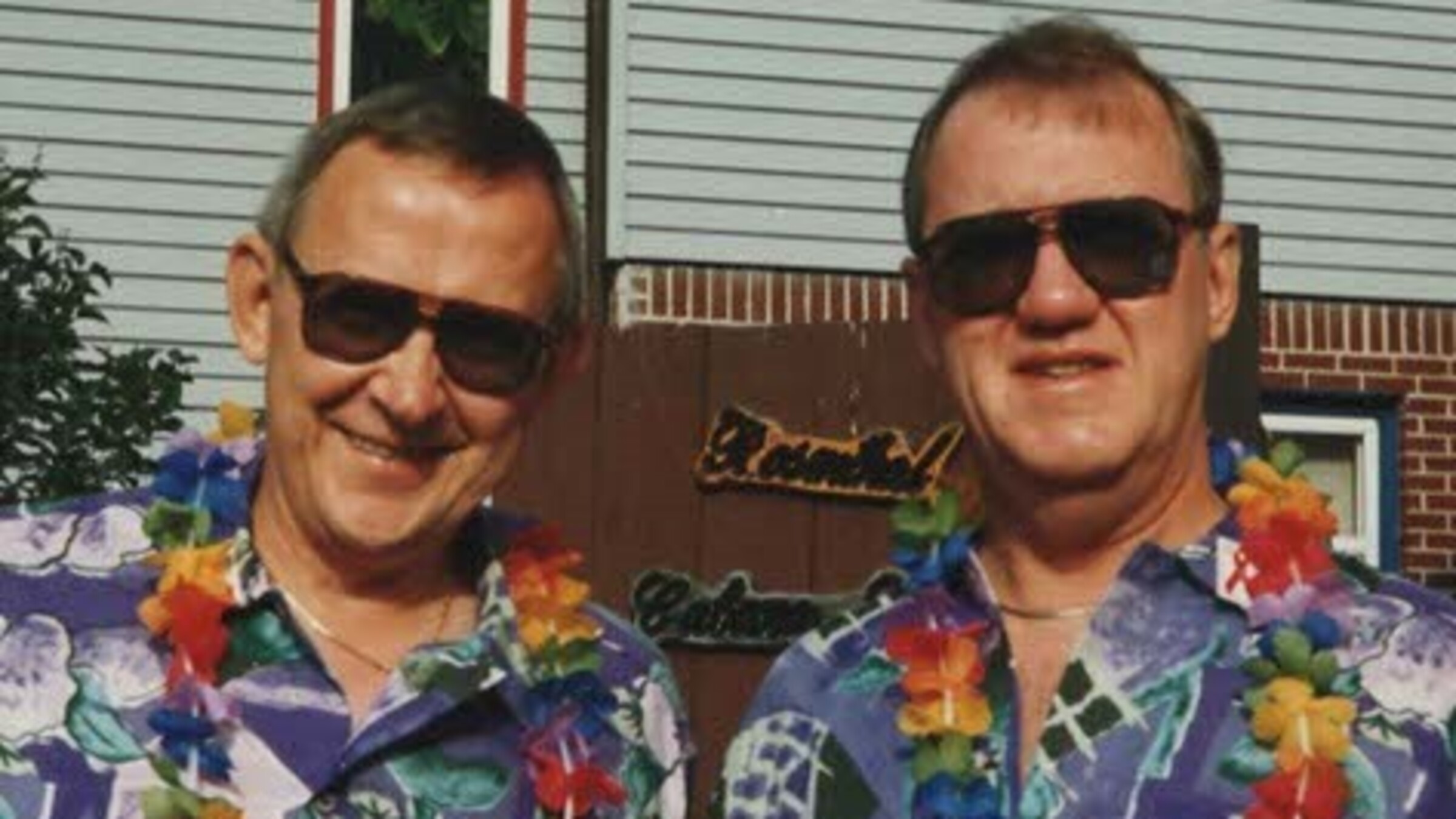 Erv & Ross
Erv & Ross
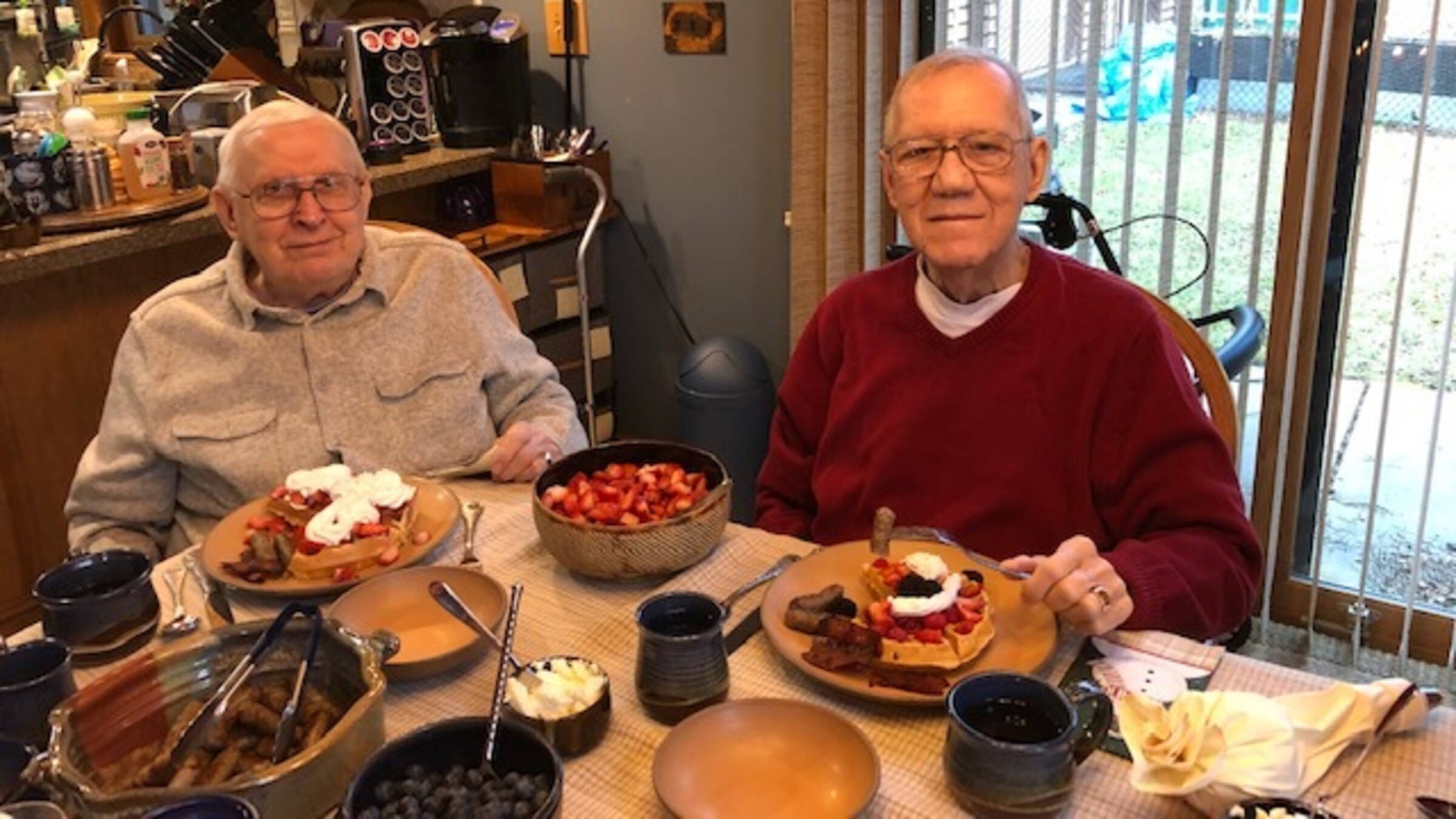 Erv & Ross
Erv & Ross
Making it official
After five years of volunteering at Alexian Village on Milwaukee’s northwest side, they moved into the complex in 2010. They had a condominium in Freedom Village a mile away, and over the years, they recruited twenty-six neighbors to join them at Alexian. Today, only two of those neighbors remain.
“Ross was the baby of that group,” said Erv. “And now, they’ve all passed on.”
“Alexian Village is a Roman Catholic community,” said Erv, “and we were the first same-sex couple to live here. It was never a big deal. Again, we do not wear signs announcing ourselves, but nobody asks either. I’ve served as president of the resident council and remain active in the community.”
“When we moved in here, we told them we wanted a non-discrimination clause,” said Erv. “They had never had one before, but they agreed to it. We thought they would add it just to our contract, but now it’s in all their contracts.”
“When we first moved to Wisconsin, Tony Earl was governor, and it was a breath of fresh air,” said Ross. “Things were quite different. We had a marriage license for Iowa, and a couple from our church was going to take us there for the ceremony. We decided to wait until Wisconsin did something.”
“The first thing that came along was domestic partnership,” said Erv. “We signed onto that, but it was not a pleasant process at the County building. They weren’t mean, but they weren’t nice. So, imagine a few years later, going back to the County Courthouse, and asking for a marriage license."
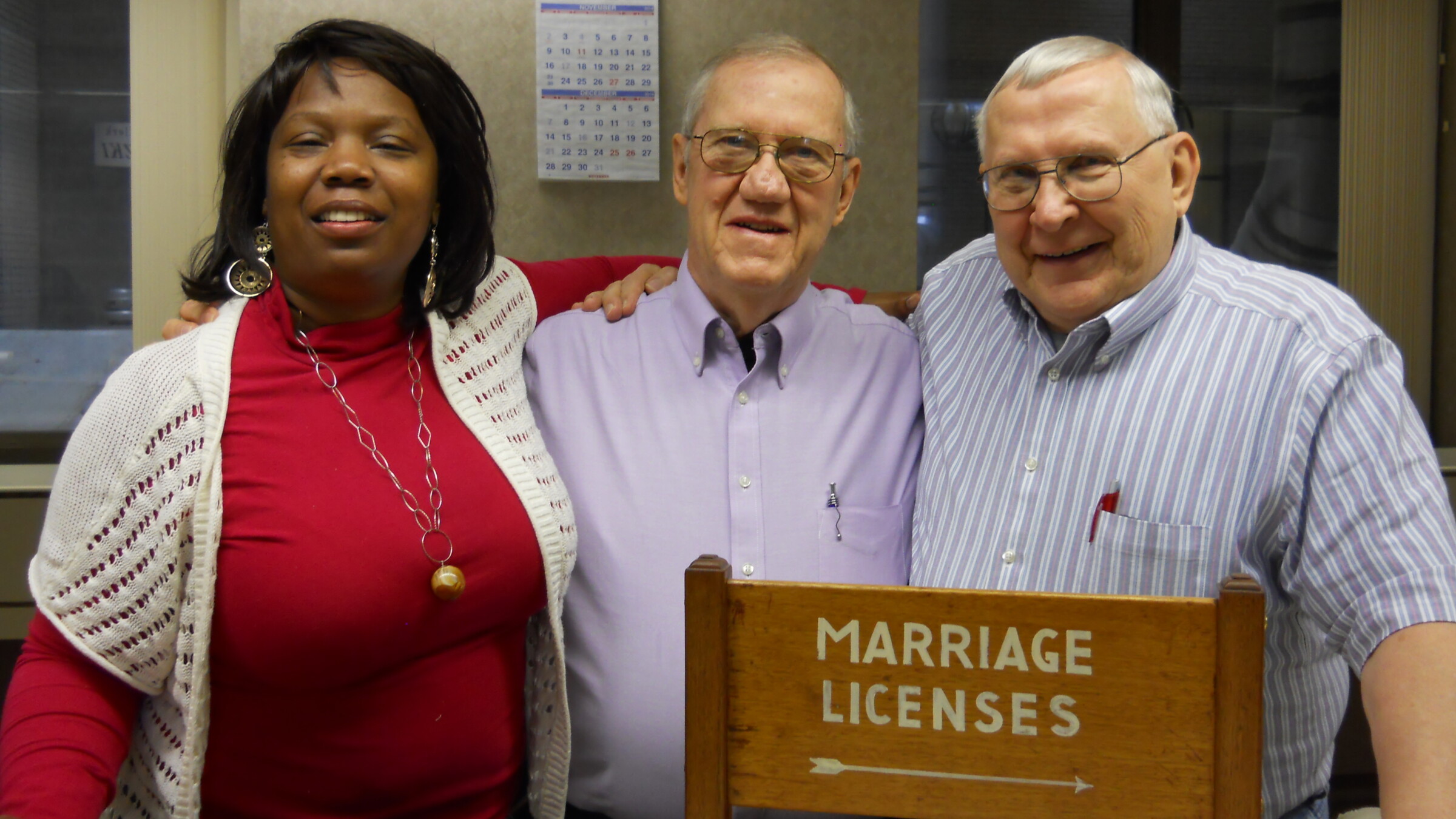 Erv & Ross
Erv & Ross
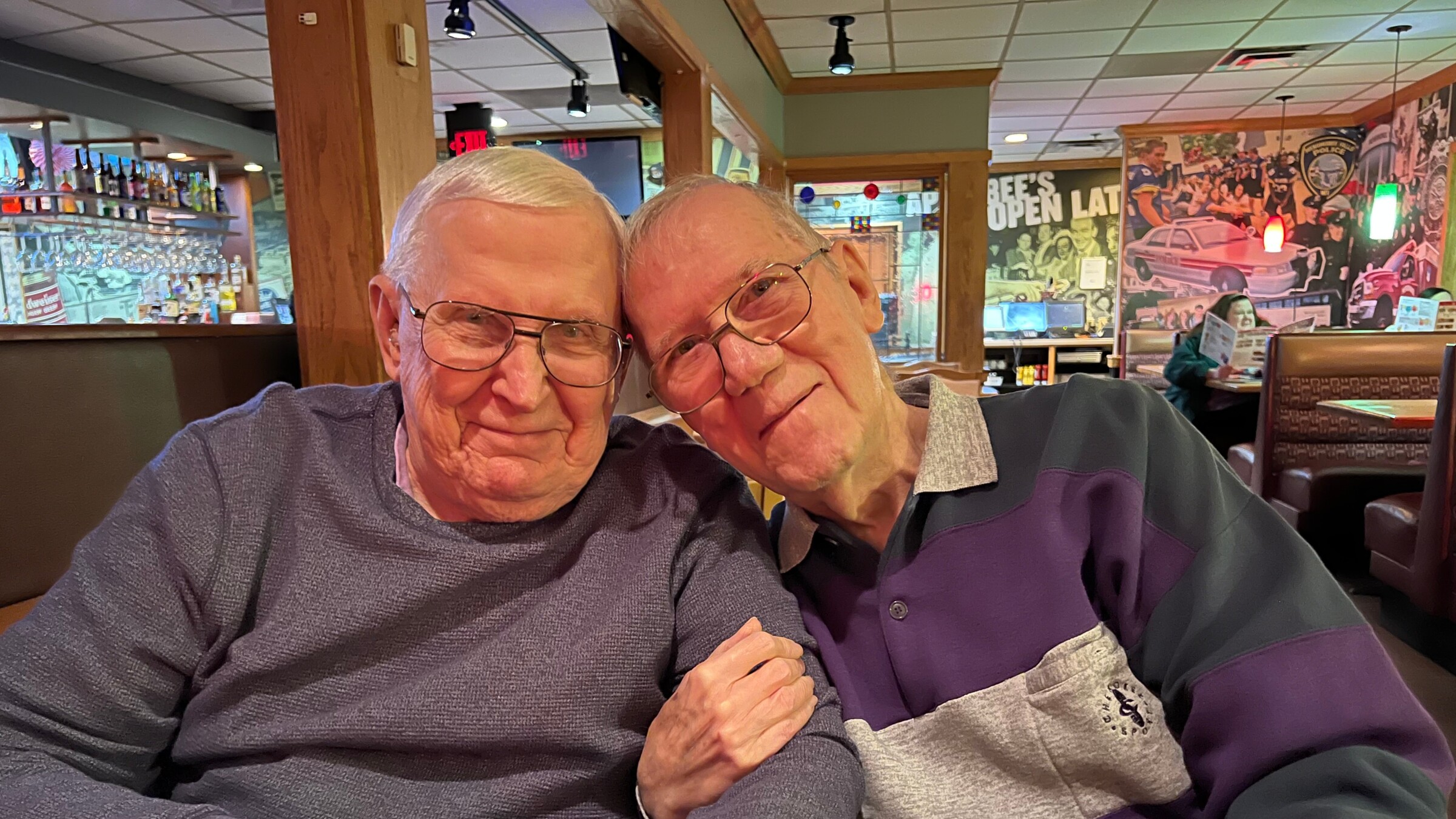 Erv & Ross
Erv & Ross
 Erv & Ross at Hamburger Mary's
Erv & Ross at Hamburger Mary's
recent blog posts
April 21, 2025 | Michail Takach
April 06, 2025 | Michail Takach
Camille Farrington & Vicki Shaffer: standing up for students
March 31, 2025 | Amy Luettgen
The concept for this web site was envisioned by Don Schwamb in 2003, and over the next 15 years, he was the sole researcher, programmer and primary contributor, bearing all costs for hosting the web site personally.
